| We are now at the University Science Museum. We've been here
before, and if you want a reminder, click here
and return. |
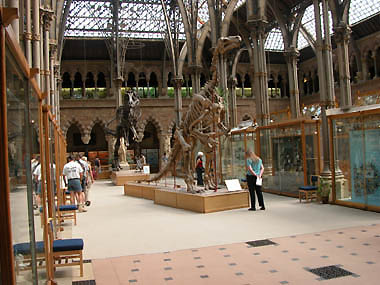 |
 This is a life size
sculpture of on of England's greatest Scientist Charles
Darwin. Despite the fact that he faced opposition from
clerics, and was an admitted agnostic, his body rests in Westminster
Abby next to that of --> This is a life size
sculpture of on of England's greatest Scientist Charles
Darwin. Despite the fact that he faced opposition from
clerics, and was an admitted agnostic, his body rests in Westminster
Abby next to that of --> |
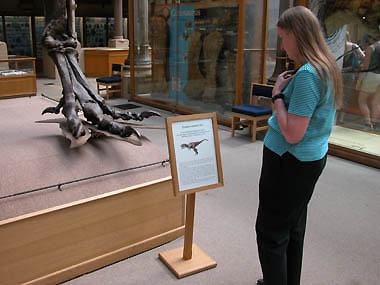 |
| This is the skeletal foot of a Tyrannosaurs Rex. |
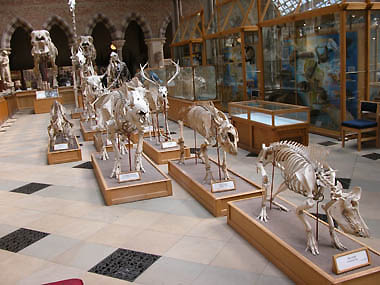 |
| This display really impressed me. It begins with a pig,
front-right and goes back through larger and larger animals ending
with an elephant. Current animals, not ancient. Great education.
Kids must really love this. |
|
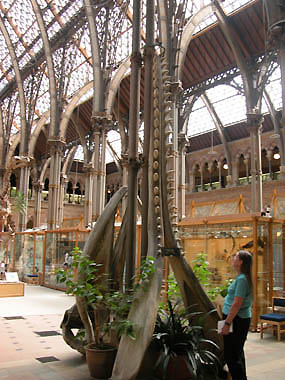
This is the lower jaw of an 88 foot whale in full
vertical display. I must say that although the Smithsonian in
Washington perhaps exceeds this one in variety, the displays here
are really well done.
|
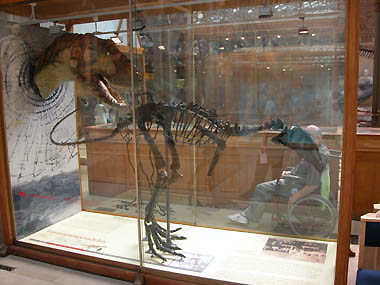 |
|
Above, another glassed dinosaur and wheelchair. |
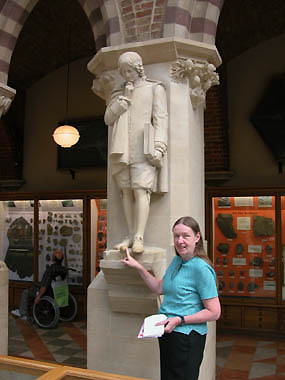
Isaac Newton. Elaine was really amused
with this statue. Note Isaac's puzzled expression as he gazes below.
Clearly, he is looking at an apple, that apparently dropped from
some uncultured tree. Neat!
|
 |
| We ended with a tour of the Pitt Rivers Museum. The entrance is
pictured above, but the interior is totally stunning. |
|

